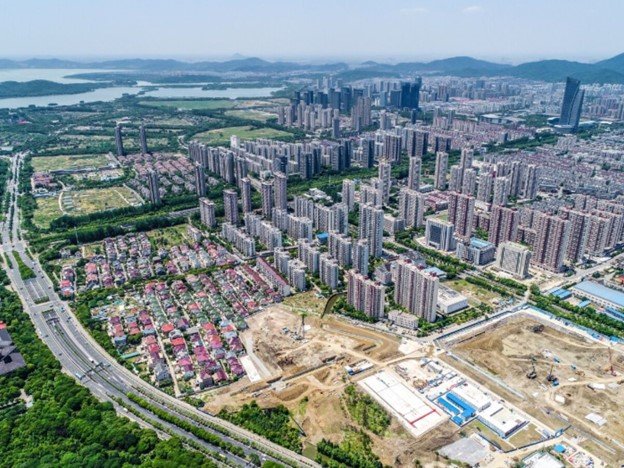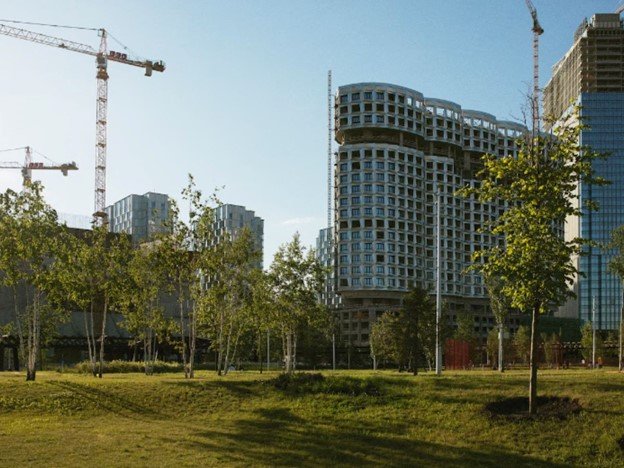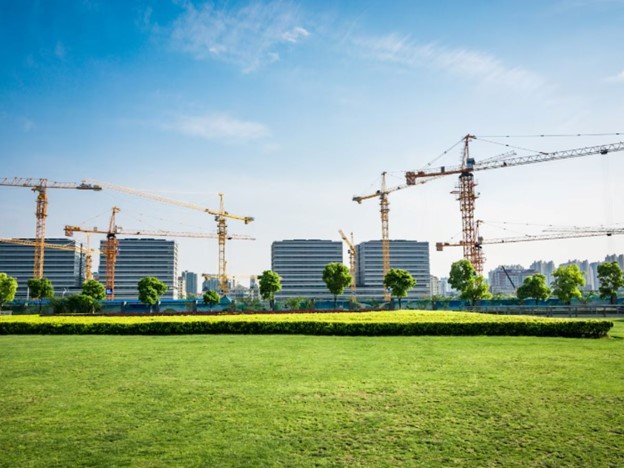Top Affordable Construction Materials in the Philippines

Introduction to Affordable Construction Materials
The concept of affordable construction materials is increasingly significant in the Philippines, where the burgeoning construction industry demands innovative solutions to meet budget constraints while ensuring quality and safety. As urbanization progresses, the requirement for diverse building projects, from residential homes to commercial establishments, has risen dramatically. However, the financial means to undertake such ventures often varies, making cost-effective choices essential.
Affordable construction materials offer a pathway for various stakeholders in the industry, providing options that do not compromise durability or safety. The balance between affordability and structural integrity is crucial in ensuring that projects both meet the needs of their occupants and stand the test of time. In a country where economic factors can greatly influence construction viability, selecting the right materials becomes a pivotal decision that can determine project success.
The growing demand for construction materials that are both budget-friendly and lasting has prompted suppliers and manufacturers to innovate. A wide range of materials has emerged, which caters not only to architectural and design preferences but also to the economic realities faced by developers and homeowners alike. From locally sourced aggregates to alternative eco-friendly options, the emphasis on affordability ensures that projects remain financially feasible without sacrificing essential quality standards.
In recent years, the Philippine construction sector has witnessed a surge in activity, driven by government infrastructure initiatives and increased private investments. Consequently, the pressing need for affordable construction materials is more important than ever. Stakeholders are presented with the opportunity to explore various options that can contribute to their overall project success, reflecting both economic sensibilities and aesthetic appeal. Understanding the landscape of affordable construction materials is the first step in navigating this dynamic industry effectively.
Understanding the Importance of Cost Efficiency
Cost efficiency plays a crucial role in the construction industry, particularly within the context of the Philippines. The utilization of affordable construction materials not only minimizes the overall expenditure of projects but also ensures that essential qualities such as structural integrity and aesthetic appeal are maintained. When project stakeholders embrace cost-effective solutions, they can achieve a sustainable balance between quality and economy.
For small to medium enterprises (SMEs), budget management is paramount. The rising costs of construction can pose significant challenges, making it essential to explore options that align with financial constraints. By strategically selecting affordable materials, businesses can accomplish their targets without compromising quality. This approach enables firms to allocate their resources more effectively, ensuring that vital components such as labor, permits, and equipment can also be adequately funded.
Additionally, the strategic purchasing of inexpensive materials can yield considerable long-term savings. Such savings are not merely limited to the initial investment; they extend to maintenance and operational costs throughout the lifecycle of the construction project. For instance, choosing durable materials might be more cost-effective in the long run, as they require less frequent repairs or replacements. Moreover, the integration of innovative, budget-friendly construction products can offer excellent performance while complying with local building standards.
Therefore, it becomes evident that cost efficiency is not just about finding the lowest price but rather about making informed choices that align with the project’s objectives. Emphasizing the importance of affordable construction materials, stakeholders can better navigate the complexities of budget management, paving the way for successful project completion. Ultimately, understanding and implementing cost-efficient strategies are essential steps toward fostering a robust construction industry in the Philippines.
Local Sourcing of Construction Materials
Local sourcing of construction materials in the Philippines offers numerous benefits that extend beyond mere cost savings to encompass economic and environmental advantages. One of the primary benefits is the significant reduction in transportation costs. By procuring materials from nearby suppliers or manufacturers, contractors can minimize logistics expenses, ensuring that budget constraints are adhered to throughout the building process. The shorter distance materials must travel also results in faster delivery times, facilitating timely project completion.
In addition to financial benefits, local sourcing supports the local economy. By purchasing materials from local manufacturers and suppliers, construction companies contribute to job creation and community development. This practice fosters a sustainable cycle of economic growth, enabling local entrepreneurs to thrive in a competitive marketplace. Furthermore, engaging with local businesses not only builds community relationships but also drives innovation in the construction sector, as suppliers may develop new and improved products that sustain the region’s economic viability.
From an environmental perspective, sourcing construction materials locally minimizes the carbon footprint associated with long-distance transportation. The construction industry is a significant contributor to greenhouse gas emissions, and reducing transportation distances can lead to a more sustainable model. Moreover, many regions in the Philippines are rich in natural resources that can be utilized for construction purposes. Regions such as Cebu, known for its high-quality limestone, and Batangas, recognized for its abundant volcanic ash, can provide affordable and locally sourced materials that meet the industry’s demands.
In engaging with local suppliers, it becomes imperative for the construction industry to prioritize sustainable practices. This conscientious approach not only ensures the availability of materials but also enhances community engagement and environmental stewardship across the Philippines.
Affordable Building Materials: A Comprehensive List
When considering construction projects in the Philippines, cost-effective materials play a pivotal role in ensuring projects remain within budget while maintaining structural integrity. Here is a detailed overview of several affordable construction materials available in the market.
One of the most common options is concrete blocks. These blocks are known for their durability and strength, making them an ideal choice for both load-bearing and non-load-bearing walls. The average cost per block ranges from PHP 15 to PHP 25, depending on size and type. Their fire-resistant properties and ease of installation further enhance their appeal.
Bamboo is another sustainable and economical choice. This natural material is gaining traction for its strength-to-weight ratio and adaptability. Bamboo can be used for flooring, scaffolding, and walls, typically costing around PHP 200 to PHP 300 per square meter. Its environmental impact is minimal, making it an eco-conscious alternative.
Recycled metals, derived from old structures and scrap, represent a low-cost solution for reinforcing frameworks and roofing. The price for recycled steel or aluminum depends on market conditions, commonly around PHP 30 to PHP 50 per kilogram. The use of recycled materials not only saves costs but also contributes to waste reduction.
Moreover, low-cost roofing options, such as corrugated galvanized iron sheets, are widely used for both residential and commercial buildings. Priced between PHP 50 to PHP 100 per square meter, these sheets provide durability and protection against the elements while being easily transportable.
In addition, lightweight concrete panels offer another affordable alternative for modern constructions. These panels provide insulation and can significantly reduce construction time, typically averaging PHP 1,200 to PHP 1,600 per panel. Builders and homeowners can benefit from the swift installation and energy efficiency these panels offer.
This comprehensive list serves as a useful reference for builders and homeowners exploring affordable construction materials in the Philippines. By understanding the diverse options available, one can make informed decisions that balance cost with quality.
Sustainable Options for Eco-Friendly Construction
In the pursuit of affordable construction materials in the Philippines, sustainable options have emerged as a viable choice. The emphasis on green building practices underscores the significance of reducing environmental impact while maintaining affordability. Among these sustainable materials, recycled materials play a pivotal role. Utilizing products that have been repurposed not only diverts waste from landfills but also decreases the demand for new resources. Examples include recycled concrete aggregates, which can be used in the foundation of structures, and reclaimed wood, ideal for flooring and cabinetry.
Another noteworthy eco-friendly material gaining popularity in the Philippines is bamboo. Known for its rapid growth and strength, bamboo offers a sustainable alternative to traditional wood. Its lightweight nature facilitates easy transport and construction, while its structural capabilities provide durable support for various types of construction, from residential buildings to bridges. Many local builders are harnessing bamboo’s potential, integrating it into both structural and aesthetic elements of their designs, thus emphasizing its dual functionality.
Earth blocks also present an affordable option for those looking toward sustainable construction. Made from compressed soil, often mixed with stabilizers such as cement or lime, earth blocks are cost-effective while providing excellent thermal insulation. This insulation capability is particularly beneficial in the Philippine climate, reducing energy consumption for cooling and heating. Moreover, earth blocks are locally sourced, supporting the local economy and minimizing transportation emissions.
Integrating these sustainable materials into construction practices not only underscores a commitment to environmental stewardship but also promotes long-term benefits. By prioritizing the use of materials like recycled products, bamboo, and earth blocks in building projects, Filipino contractors are paving the way for a more sustainable and affordable future in construction. It is crucial to continue exploring and adopting these options to enhance the sustainability of the construction industry in the Philippines.
Innovative Construction Techniques for Cost Savings
In the Philippine construction landscape, innovative techniques are increasingly vital for achieving cost savings while maintaining quality and durability. One significant advancement is modular building, where structures are prefabricated in sections or modules and then assembled on-site. This method not only accelerates the construction timeline but also minimizes labor costs, making it an attractive option for budget-conscious projects. For instance, a recent housing development in Cebu successfully utilized modular construction techniques, resulting in a 25% reduction in overall project expenses.
Another effective method is the use of precast concrete, which involves casting concrete elements in a controlled environment before transporting them to the construction site. This technique enhances quality and reduces waste as it allows for precise measurements and fewer on-site errors. A notable case is a commercial building project in Metro Manila that adopted precast panels, reducing construction time by approximately 30% and decreasing labor costs significantly. The durability and longevity of precast concrete further contribute to long-term cost efficiency, as these materials require less maintenance over time.
Additionally, embracing alternative designs can also yield savings. Open floor plans or simple geometric shapes not only reduce material costs but can expedite the construction process. For instance, a family home built in Mindanao with an open concept design reduced material usage by 15%, demonstrating that both aesthetics and functionality can align with economic sensibilities.
To capitalize on these innovative construction techniques, stakeholders in the Philippine construction sector must remain informed about advancements in design and technology. By adapting and implementing these methodologies, they can significantly enhance project efficiency and cost-effectiveness, ensuring that affordable construction continues to flourish in the region.
Challenges in Using Affordable Construction Materials
The use of affordable construction materials presents a variety of challenges that builders, contractors, and consumers must navigate. One significant concern is the quality of these materials, which can sometimes be perceived as inferior compared to more expensive alternatives. While many affordable options meet safety standards, there may be instances where the lower cost correlates with lower durability or performance. Hence, it is imperative for stakeholders to conduct thorough research and testing, ensuring that these materials fulfill necessary building codes and regulations.
Availability is another challenge associated with affordable construction materials. In certain regions of the Philippines, the supply chain for these low-cost options may be inconsistent or limited. This can lead to delays in construction, as builders may find it difficult to source the required materials in a timely manner. To mitigate this challenge, it is advisable to establish relationships with multiple suppliers, which can provide flexibility and a wider variety of affordable options for construction projects.
Regulation also raises concerns when utilizing affordable construction materials. Builders must ensure compliance with local building regulations and safety standards, which can vary significantly across the country. A common misconception is that all low-cost materials are substandard and unregulated; however, many affordable options are viable and compliant with safety guidelines. To dispel this myth, education is key. Builders should seek information from reliable sources, such as industry associations or governmental agencies, to develop a better understanding of which affordable materials are both cost-effective and safe.
By addressing these challenges proactively, stakeholders can effectively utilize affordable construction materials while ensuring that their projects remain within budget and adhere to safety requirements.
Future Trends in Construction Materials in the Philippines
The construction industry in the Philippines is on the brink of transformation, driven by emerging technologies and a shift in consumer preferences towards sustainability and affordability. As urbanization accelerates, the demand for cost-effective and eco-friendly construction materials continues to rise. One notable trend is the increasing use of recycled materials such as crushed concrete and reclaimed wood, which not only reduce costs but also minimize environmental impact. These materials are gaining traction among builders seeking to adhere to government guidelines for sustainable construction practices.
Furthermore, advancements in technology are facilitating the development of innovative materials that are both affordable and durable. For instance, 3D printing is making waves in the construction sector, allowing for the rapid fabrication of building components using less material and labor. This technology also holds the potential to decrease waste and lower overall construction expenses, positioning it as a preferred option for future construction projects.
Government policies are also playing a critical role in shaping the future landscape of construction materials. Recent initiatives aimed at promoting the use of green building materials are encouraging manufacturers to invest in research and development of sustainable options. By providing incentives for the adoption of affordable materials, the government is fostering an environment that supports sustainable development and addresses the challenges faced by low-income households in accessing quality housing.
Consumer preferences are changing, with a growing emphasis on energy-efficient design and materials that lower utility costs. This indicates a clear validation of the need for affordable construction solutions without compromising quality or sustainability. As these trends continue to evolve, stakeholders in the construction industry must adapt and innovate to meet the demands of the future, ensuring that affordable construction materials remain at the forefront of the Philippine construction market.
Conclusion and Final Thoughts
In examining the landscape of affordable construction materials in the Philippines, it becomes clear that the choices made during a building project can significantly impact both budget constraints and overall quality. Throughout this blog post, we have explored various construction materials that not only provide economic advantages but also meet the standards required for durability and sustainability. These materials, ranging from bamboo and recycled plastics to locally sourced aggregates, represent the potential for innovation within the local construction industry.
The significance of selecting affordable yet reliable materials cannot be understated. As our population continues to grow, so does the demand for housing and infrastructure. By opting for cost-effective construction materials, builders and developers can not only lower expenses but also contribute positively to community development. Sustainable choices can lead to improved living conditions and bolster the economy by creating job opportunities within local supply chains.
Moreover, the significance of material choices goes beyond initial costs; it reflects a commitment to sustainability and responsible construction practices. Utilizing locally sourced materials reduces transportation emissions and promotes the use of native resources, which can lead to lower environmental impacts. This approach aligns well with the growing awareness of ecological responsibility in construction, making it imperative for stakeholders to remain informed about their options.
As we conclude, it is vital for both new and seasoned builders to weigh the pros and cons of each construction material under consideration. By prioritizing a balance of affordability, quality, and sustainability, stakeholders in the Philippine construction industry can lead the way in fostering resilient communities and promoting a harmonious relationship with the environment.





